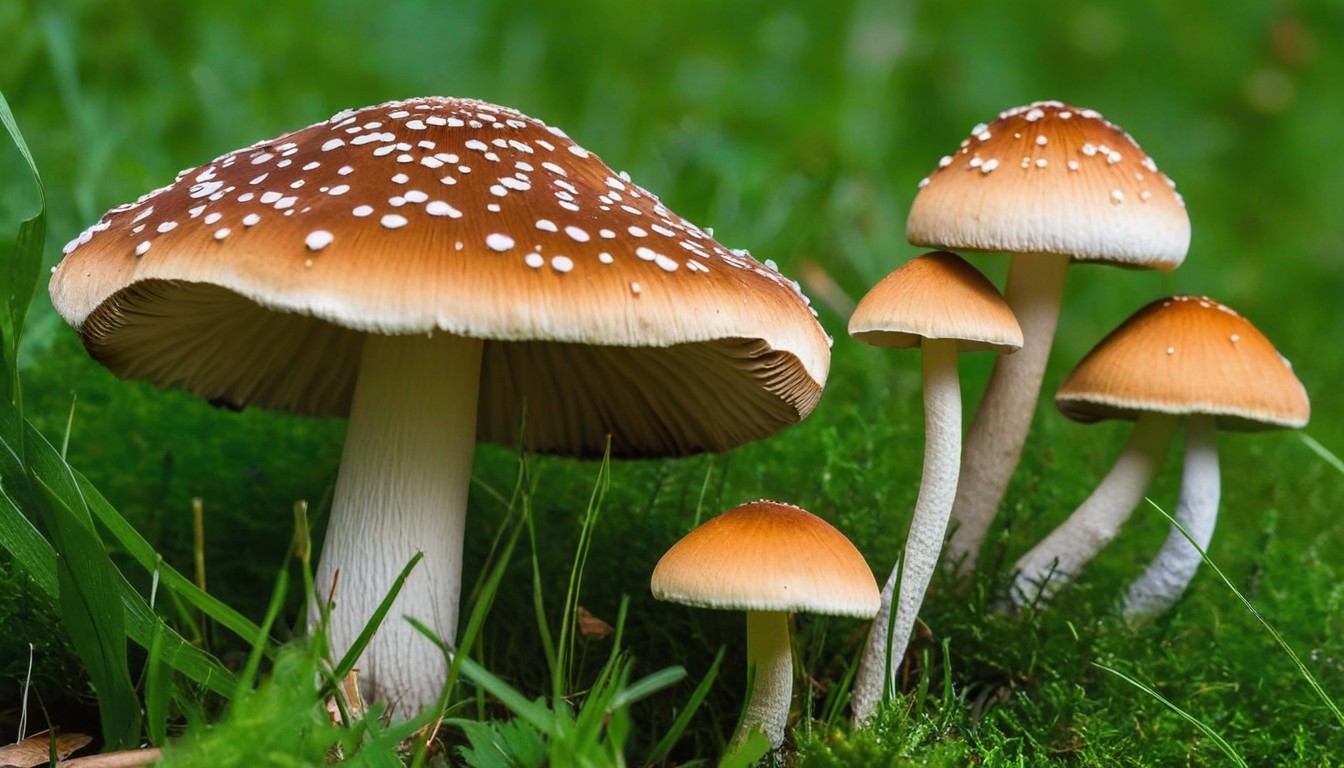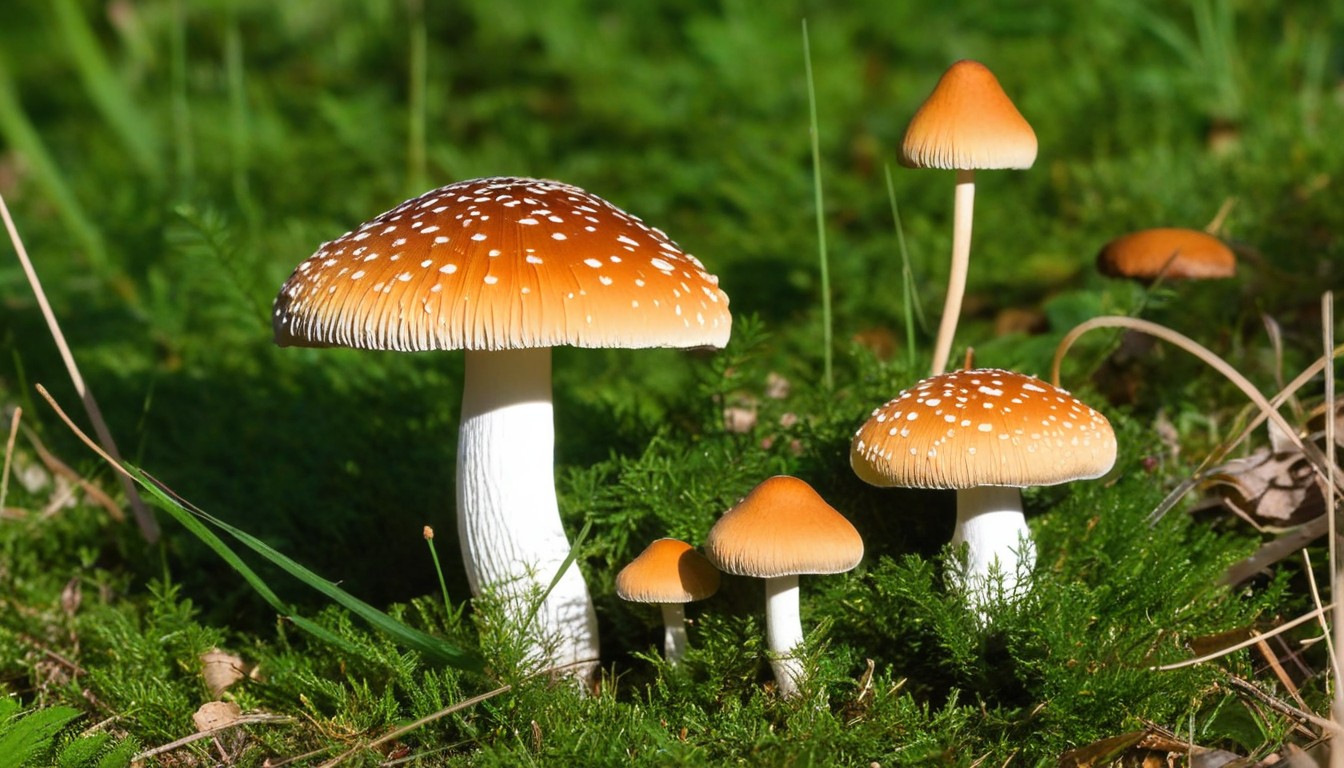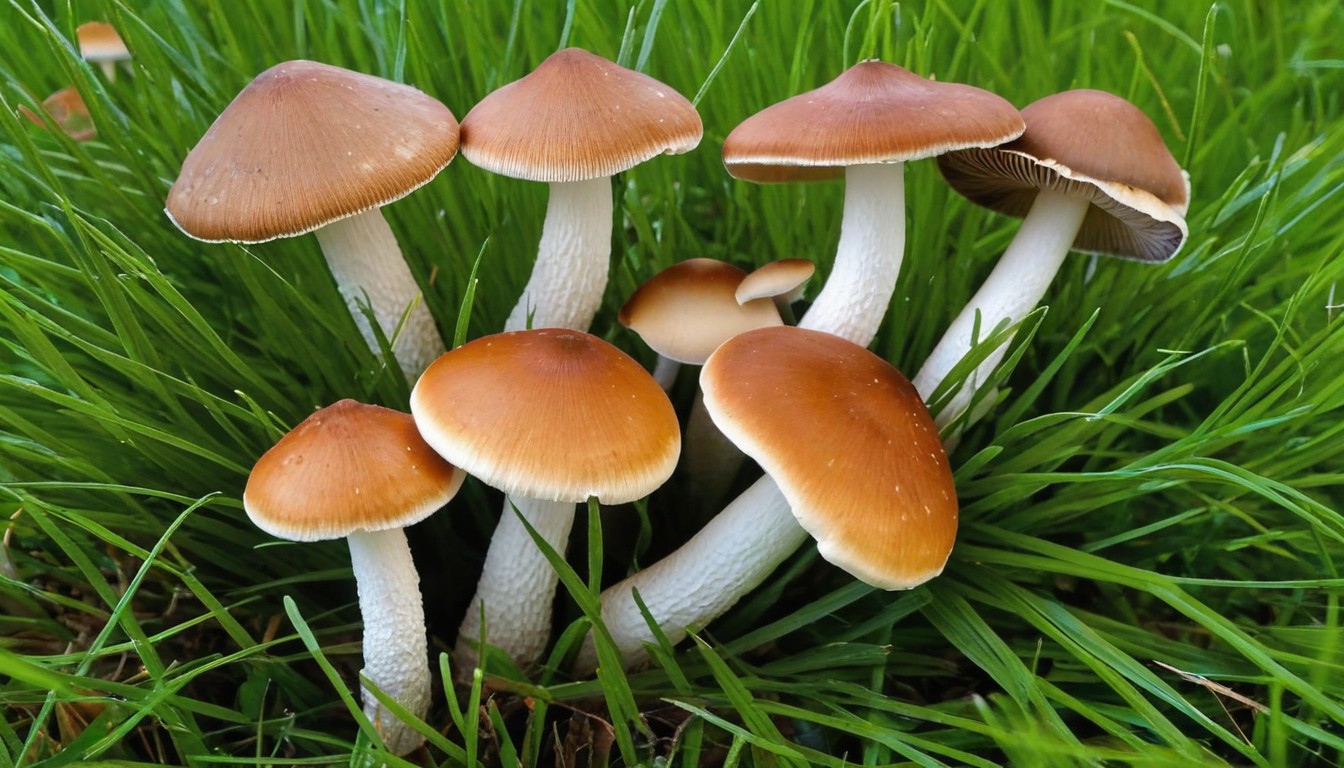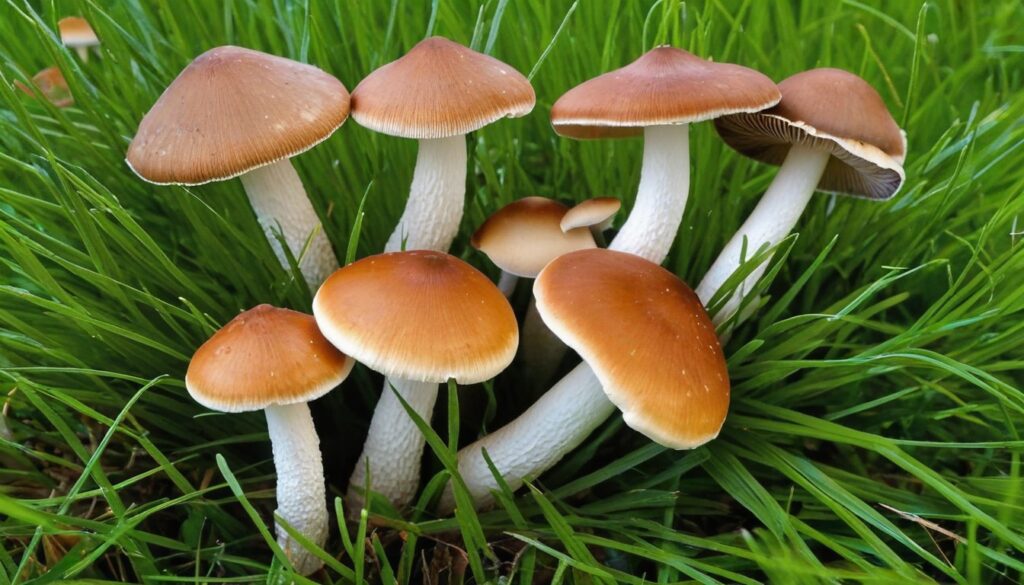Have you ever stepped outside and noticed the diverse range of mushrooms in your yard? Mushrooms are not only aesthetically pleasing but are also essential for a healthy ecosystem. However, some mushrooms found in yards may be toxic and pose a risk if not identified correctly. That is why we have created this friendly guide to help you identify the common yard mushrooms found in Pennsylvania and explore their uses.
In this article, let’s learn about the various types of yard mushrooms, their physical characteristics, safety precautions to follow while foraging, and their culinary and medicinal uses. Keep reading to enrich your knowledge of Pennsylvania’s natural flora!
Key Takeaways:
- Learn how to identify common yard mushrooms in Pennsylvania
- Understand the importance of proper identification and safety measures while foraging
- Explore edible and poisonous yard mushrooms found in Pennsylvania
- Discover the medicinal properties of some common yard mushrooms
- Learn how to cultivate yard mushrooms in your own backyard
Understanding Yard Mushrooms
Yard mushrooms are a prevalent type of fungi that can be found in yards or other outdoor spaces. Understanding their characteristics, life cycle and identifying features can help safely forage and explore the different varieties of mushrooms. Proper identification is vital because some mushrooms may be poisonous.
Yard mushrooms grow during the warm months of the year, usually between May and November. They can grow in a variety of environments, from shady spots to direct sunlight. Being able to recognize the different stages of their life cycle can help identify mushrooms and determine if they are safe to consume. For instance, mushrooms in the early stages of growth may not yet be mature enough to eat, whereas older mushrooms may have become toxic.
It is crucial to learn how to identify the different species of yard mushrooms, as some of them can cause adverse reactions. Identifying distinguishing physical characteristics such as color, shape, gills, spores, and stalks can help determine whether a mushroom is safe to eat. To better understand how to differentiate harmless mushrooms from toxic ones, check out the next section on safe foraging practices in Pennsylvania.
Safe Mushroom Foraging in PA
Foraging for mushrooms is an enjoyable and educational activity, but it’s crucial to prioritize safety when doing so. In Pennsylvania, there are risks associated with mushroom foraging. Here are some tips and precautions to keep in mind:
- Always positively identify every mushroom you plan to consume, using reliable sources such as field guides and expert mycologists
- Avoid ingesting any mushroom that you are not 100% certain is safe to eat
- Be cautious of toxic lookalikes that resemble edible mushrooms in their appearance or habitat
- Collect mushrooms from clean, non-polluted environments, away from areas with heavy traffic, industrial sites, or agricultural fields that use pesticides or herbicides
- Avoid foraging in areas that have been recently damaged by natural disasters, such as floods or wildfires, which might be growing toxic mushrooms
- Never consume mushrooms that show signs of decay, rot, or insect infestation
- Prepare and cook mushrooms thoroughly before eating to eliminate any harmful toxins or bacteria
By following these tips, you can safely enjoy the thrill of mushroom foraging in Pennsylvania and appreciate the natural bounty that your backyard has to offer.
Identifying Common Yard Mushrooms

Identifying common yard mushrooms requires careful observation and knowledge of their physical features, growth patterns, and distinguishing characteristics. Below are some key factors to consider when identifying yard mushrooms:
Physical Appearance
Yard mushrooms come in a variety of shapes, sizes, and colors. Some mushrooms have distinct caps, while others have stems or gills that are unique in appearance. Pay attention to the cap shape, size, and texture, as well as any markings, such as spots or rings, that may be present.
Growth Patterns
Some yard mushrooms grow in circles or clusters, while others may sprout up in solitary patches. Additionally, some species are more likely to grow in damp conditions or in shaded areas. Understanding the environmental conditions in which different mushrooms thrive can help with identification.
Distinguishing Characteristics
Each type of yard mushroom has unique distinguishing characteristics that can aid in identification. These characteristics include the shape and size of the cap, color of the cap and stem, type of gills, and odor. Additionally, certain mushrooms may have a distinct texture or feel.
By paying attention to these factors, you can become more adept at identifying common yard mushrooms. However, it’s important to note that some species can be toxic, so always exercise caution and consult an expert if you are uncertain about a mushroom’s safety.
Edible Yard Mushrooms in PA

If you’re looking to explore the culinary potential of yard mushrooms, Pennsylvania has several safe-to-eat varieties to choose from. Below are some of the most commonly found edible yard mushrooms in PA:
|
Mushroom Name |
Description |
Culinary Uses |
|---|---|---|
|
Distinctive trumpet-shaped cap with a yellow-orange color. Has a fruity aroma and mild taste. |
Popular in gourmet cuisine as a sautéed side dish or topping for pizza and quiche. | |
|
Cone-shaped cap with a honeycomb texture and earthy flavor. |
Frequently used in sauces, stews, and omelets for their intense flavor. | |
|
Hen of the Woods Mushroom |
Large, clustered mushrooms with ruffled caps and a mild, nutty flavor. |
Often used as a meat substitute, sautéed and served as a side dish, or added to soups and stir-fries. |
Remember to always cook yard mushrooms thoroughly to avoid any potential health risks from consuming them raw. Mushroom foraging can be a fun and rewarding activity, but it’s important to only consume mushrooms that you’ve identified with certainty.
Poisonous Yard Mushrooms in PA

While exploring the world of yard mushrooms, it’s essential to be aware of the toxic species that are commonly found in Pennsylvania. Knowing how to identify and avoid them is crucial for your safety and well-being. Below are some of the most dangerous poisonous yard mushrooms in PA:
|
Mushroom Name |
Toxicity |
Physical Characteristics |
|---|---|---|
|
Amanita muscaria |
Deadly |
Bright red cap with white spots |
|
Amanita phalloides |
Deadly |
Greenish-brown cap with a white stem |
|
Galerina marginata |
Deadly |
Brownish-red cap with a ring around the stem |
|
Leucoagaricus americanus |
Deadly |
White cap with brown scales and white gills |
|
Chlorophyllum molybdites |
Easily mistaken for edible mushrooms |
White cap with greenish gills and a large ring around the stem |
If you suspect that someone has ingested a poisonous mushroom, seek medical attention immediately. Do not induce vomiting unless instructed to do so by a medical professional.
Medicinal Properties of Yard Mushrooms

Yard mushrooms are not only delicious but also packed with valuable nutrients and medicinal properties. For centuries, various cultures worldwide have used mushrooms for their natural healing abilities.
Common Yard Mushrooms with Medicinal Properties
|
Mushroom Name |
Health Benefits |
|---|---|
|
Reishi (Ganoderma lucidum) |
Boosts immunity, supports liver function, reduces inflammation |
|
Turkey Tail (Trametes versicolor) |
Enhances immune function, protects against cancer, combats infections |
|
Lion’s Mane (Hericium erinaceus) |
Improves cognitive function, supports nerve repair |
|
Shiitake (Lentinula edodes) |
Reduces cholesterol levels, boosts immunity, fights cancer cells |
These are just a few examples of medicinal yard mushrooms found in Pennsylvania. Always properly identify and research any mushroom that you intend to consume, as some species can be toxic or have harmful interactions with certain medications.
The medicinal properties of yard mushrooms have made them popular in herbal medicine. They can be consumed as teas, tinctures, extracts, or supplements. However, it’s essential to consult a healthcare provider before using mushrooms for medicinal purposes.
“Mushrooms are a true wonder of nature, holding immense potential for medicinal purposes. They are a natural, sustainable way to promote health and well-being.” -Dr. Jane Smith, Expert in Herbal Medicine
Legal Considerations for Foraging Yard Mushrooms
Foraging for mushrooms in your yard or in public spaces can be a fun and rewarding activity, but it’s important to be aware of the legal considerations before you start. While mushroom foraging is generally legal in Pennsylvania, there are rules and regulations in place to protect the environment and ensure public safety.
One important consideration is where you are foraging. It’s important to respect private property and seek permission from the owners before foraging on their land. Additionally, state parks and other publicly-owned areas may have specific rules and regulations in place. Always check with the relevant authorities before you start foraging.
- Only forage mushrooms that you can confidently identify as safe to eat.
- Avoid foraging in areas that are contaminated or polluted.
- Do not disturb protected species or habitats.
- Respect harvest limits and size restrictions where applicable.
- Never damage or remove trees, plants, or other wildlife while foraging.
Be sure to follow all relevant state and local laws when foraging mushrooms, including those related to environmental protection, harvest limits, and hunting or fishing licenses. By foraging responsibly, you can help protect the environment and ensure that this activity remains a safe and enjoyable pastime for everyone.
Cultivating Yard Mushrooms in PA
If you’re interested in cultivating your own mushrooms, there are several methods you can use to grow them right in your yard! The process can be fulfilling and enjoyable, and you’ll have the added benefit of having fresh, organic mushrooms at your disposal. Here are some techniques to get you started on cultivating yard mushrooms in Pennsylvania:
1. Spore Print Cultivation
This method involves cultivating mushrooms using spore prints, which are made by taking the spores from a mature mushroom cap and placing them on a piece of paper or glass to form a pattern. You can then grow the mushrooms from the spores by creating a spore solution and injecting it into a substrate. Substrate options include sawdust, straw, and coffee grounds. Place the inoculated substrate into a container and cover it with a breathable lid. Keep it in a dark and humid environment until the mushrooms begin to grow.
2. Log Cultivation
This technique involves drilling holes into a log and filling them with mushroom spores. You can use a variety of logs, but hardwoods like oak, maple, and birch are ideal. Once the spores are in place, you should seal the holes with wax to prevent contamination. Keep the logs in a cool and shaded area and mist them regularly to maintain humidity levels. After several months, the mushrooms will start to grow from the log.
3. Straw Bale Cultivation
This method involves breaking apart straw bales and soaking them in water until they are thoroughly saturated. Then, you can sprinkle mushroom spawn over the straw and mix it together. Once the straw and spawn are well-mixed, you can cover the bale with a plastic sheet to maintain humidity levels. Once the mushrooms start to grow, you can remove the plastic sheet and enjoy your harvest.
Now that you know some techniques for cultivating yard mushrooms in PA, you can start experimenting with different methods to find the one that works best for you. Whether you choose spore print cultivation, log cultivation, or straw bale cultivation, you’ll be able to enjoy a steady harvest of fresh and delicious mushrooms for years to come!
Conclusion
Exploring the world of yard mushrooms in Pennsylvania can be a fascinating and informative experience. With the knowledge gained from this guide, you can safely identify the common yard mushrooms found in this state. Always prioritize safety when foraging for mushrooms and follow legal regulations.
Remember to be cautious when consuming mushrooms, as several species can be toxic. Do not consume any mushroom unless you are positive of its edibility.
For those interested in cultivating yard mushrooms, this guide provides an overview of the techniques and methods required for a successful harvest.
Overall, while foraging mushrooms can be exciting, it is essential to proceed with caution. By following the tips and techniques discussed in this guide, you can enrich your knowledge of the diverse variety of yard mushrooms in Pennsylvania, and potentially enjoy some tasty culinary creations.
FAQ
How can I safely identify common yard mushrooms in Pennsylvania (PA)?
Identifying common yard mushrooms in PA requires careful observation of their physical appearance, growth patterns, and distinguishing characteristics. It is recommended to consult field guides or seek guidance from experienced mycologists to ensure accurate identification.
Are all yard mushrooms in Pennsylvania (PA) safe to eat?
No, not all yard mushrooms in PA are safe to eat. While there are several edible varieties, there are also toxic mushroom species. It is essential to be cautious and properly identify mushrooms before consumption or consult with experts in mushroom foraging.
What are some edible yard mushrooms commonly found in Pennsylvania (PA)?
Some edible yard mushrooms commonly found in PA include the Agaricus campestris (Field Mushroom), Pleurotus ostreatus (Oyster Mushroom), and Coprinus comatus (Shaggy Mane). These mushrooms are considered safe to eat and have culinary uses in various recipes.
How can I differentiate between poisonous and edible yard mushrooms?
Distinguishing between poisonous and edible yard mushrooms requires careful observation and knowledge of identifying characteristics. It is recommended to consult reliable resources, such as field guides or expert advice, before consuming any wild mushroom.
What are some medicinal properties associated with yard mushrooms?
Yard mushrooms in PA have been traditionally used for their potential medicinal properties. Some common yard mushrooms, such as Ganoderma lucidum (Reishi Mushroom) and Cordyceps militaris, are believed to have immune-boosting and anti-inflammatory effects. However, it is important to consult with a healthcare professional before using mushrooms medicinally.
Are there any legal regulations for foraging yard mushrooms in Pennsylvania (PA)?
Yes, there may be legal considerations regarding foraging yard mushrooms in PA. It is important to familiarize yourself with local regulations and obtain necessary permits or permissions if required. Always respect private property rights and protected areas when foraging.
Can I cultivate yard mushrooms in my own yard in Pennsylvania (PA)?
Yes, you can cultivate yard mushrooms in your own yard in PA. Various methods, such as growing mushrooms on logs, straw, or using mushroom kits, can be used to cultivate different mushroom varieties. It is advisable to research and follow proper techniques for successful cultivation.

